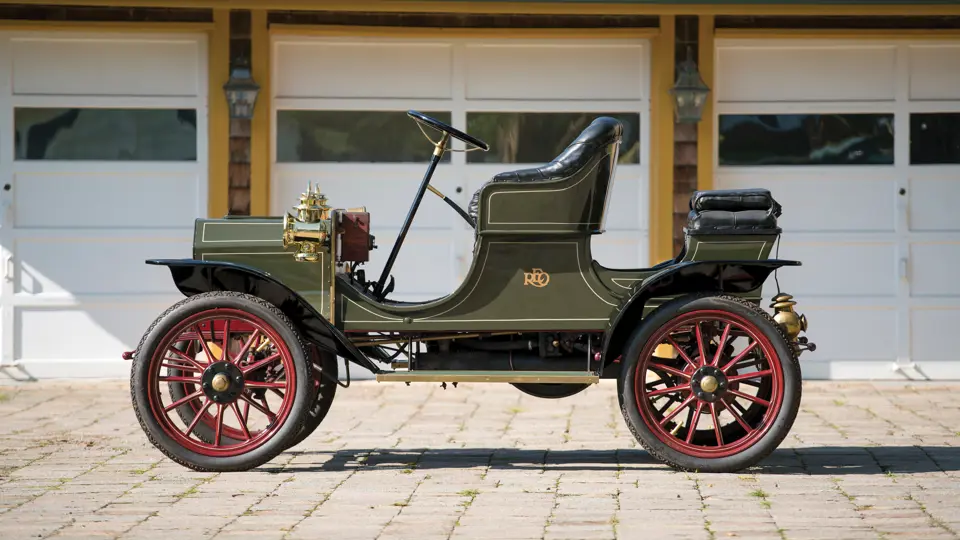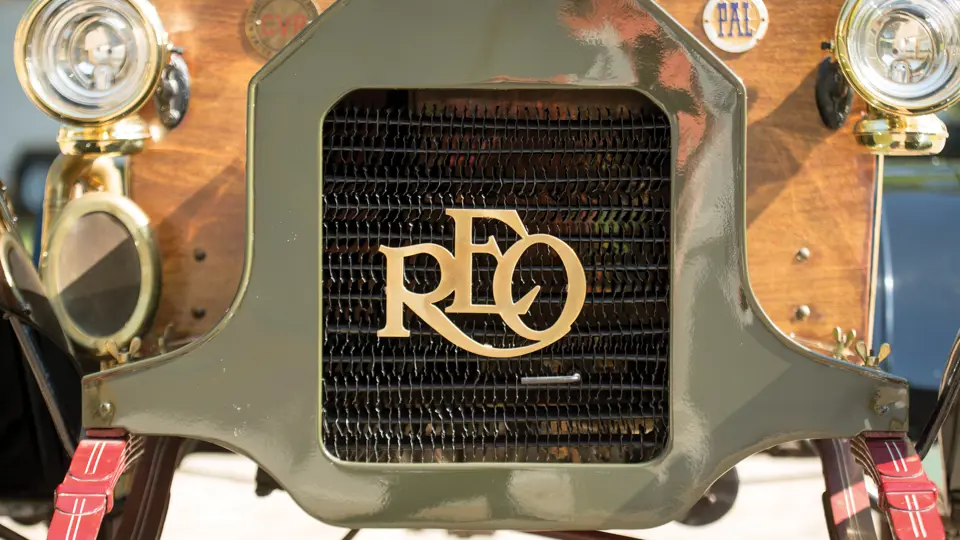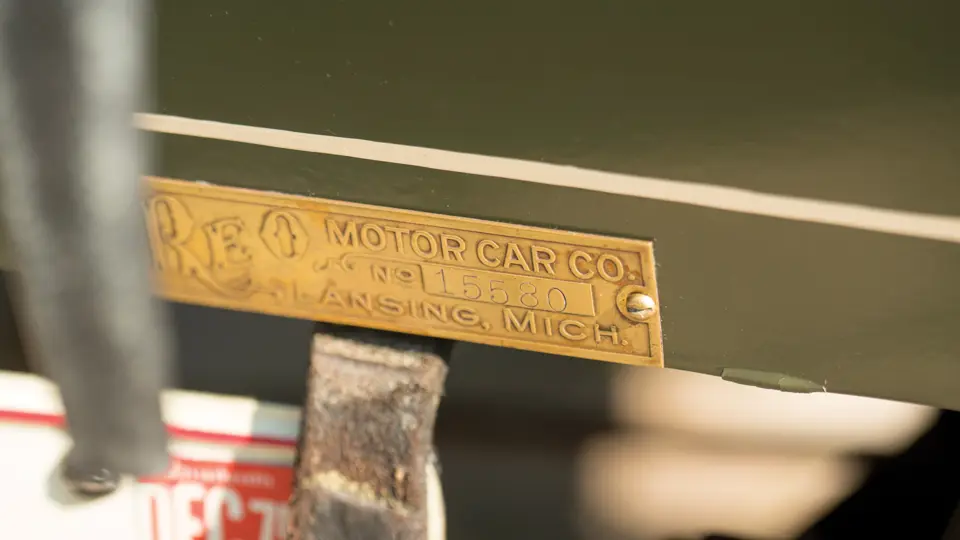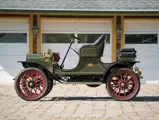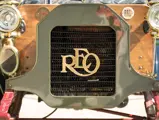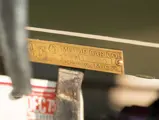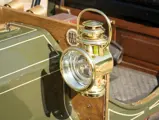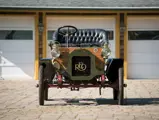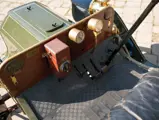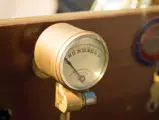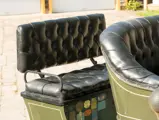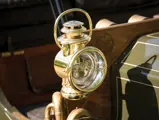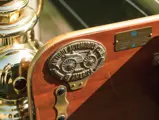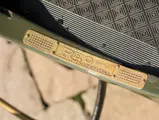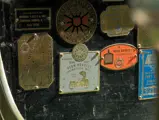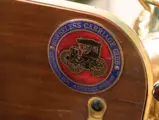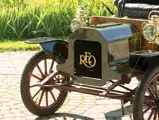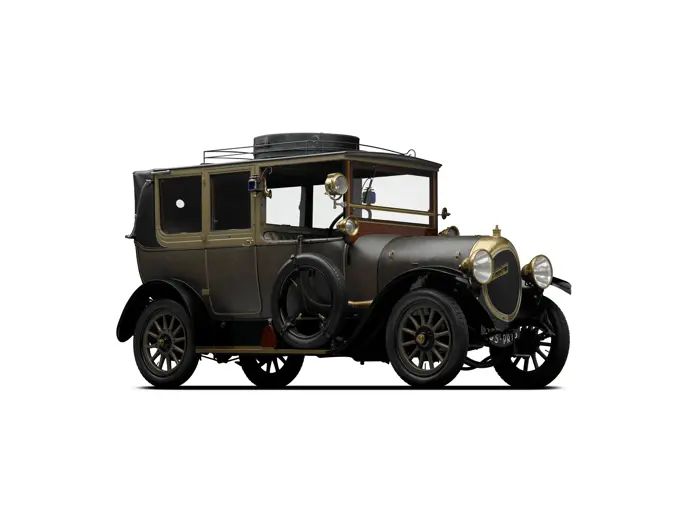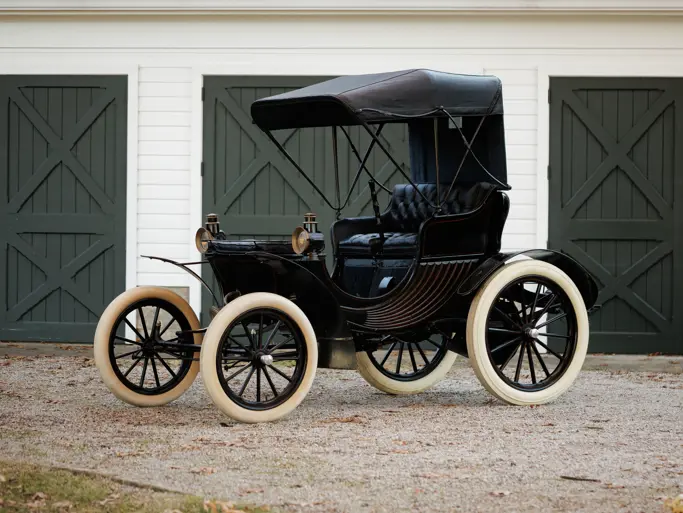Despite the overwhelming success of his Curved-Dash Oldsmobile, America’s best-selling car at the time, Ransom Olds found himself at an impasse in 1904. He was quarreling with his principal investor, Samuel Smith, and Smith’s sons Frederic and Angus who were managing the Olds Motor Works. After a final blow-up with Fred Smith in mid-1904, Olds was forced out of the eponymously named company he had founded. Though he could no longer use the Olds name on future automobiles, he did not stay away from the industry very long. In August of 1904 he founded the R.E. Olds Motor Car Company, changing it to REO Motor Car Company, using his initials, after the Smiths complained about the breach of their trademark.
The first REO (or Reo) car was completed in Lansing that October and exhibited at the New York show in January 1905. A 16-hp twin-cylinder car selling for $1,250, it was soon joined by a smaller single-cylinder sibling, with an engine just half its size and priced at $650. At Curved-Dash Olds prices, it was a lot more car, and Olds no doubt felt vindicated when Reo sales surged ahead of Oldsmobile’s in 1906, reaching more than $4 million in 1907.
The 1908 Reo Model G Roadster offered here, formerly of the noted Curtis Blake collection, is presented in lovely condition. Finished in a handsome green with pinstriping, black fenders, and red wheels, the car is a fine example of Reo engineering. It presents beautifully with a lovely patina on the black leather upholstery. With minimal effort, this car will once again make an ideal historic tour participant as it was so often in the 1950s, as shown by the numerous 1950s event and tour badges still affixed to the body.




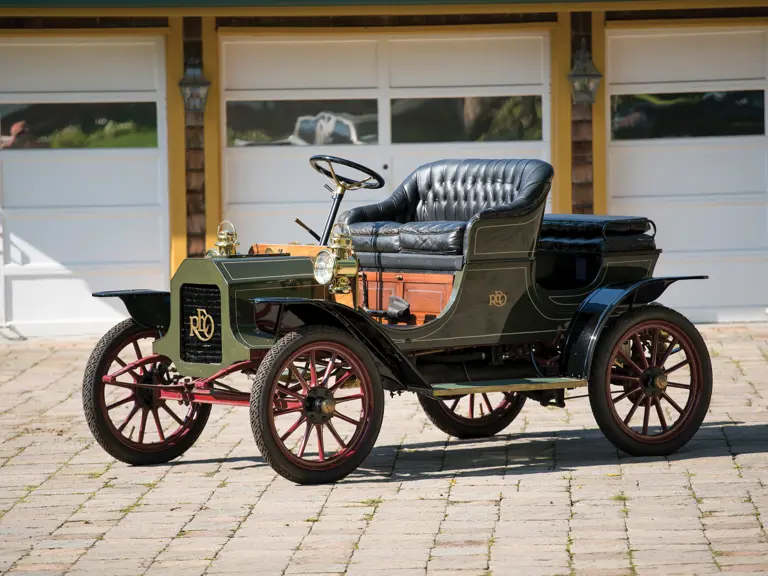

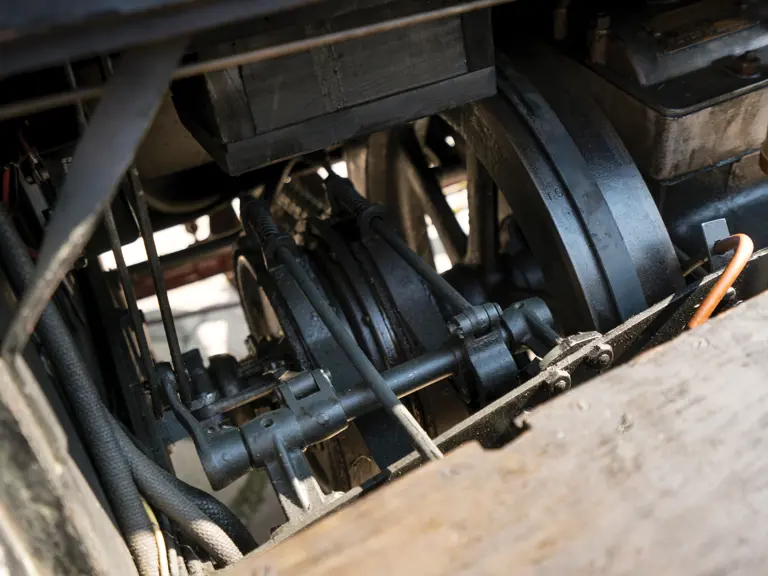
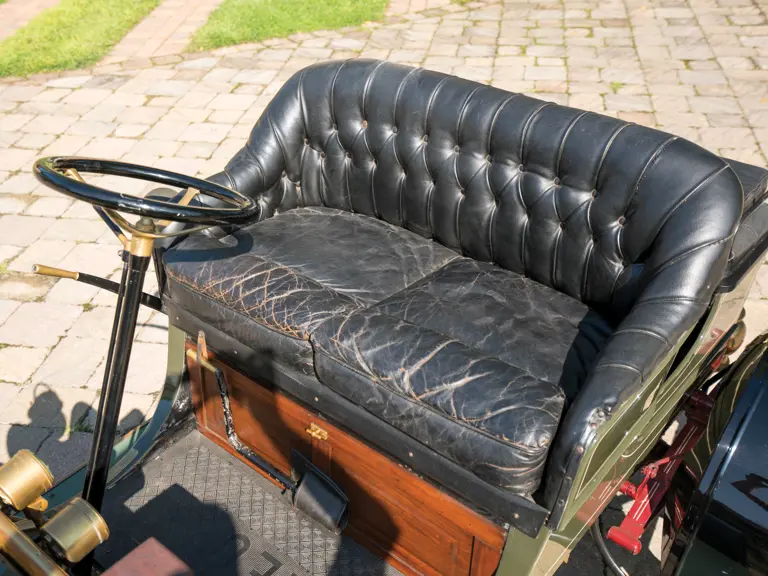
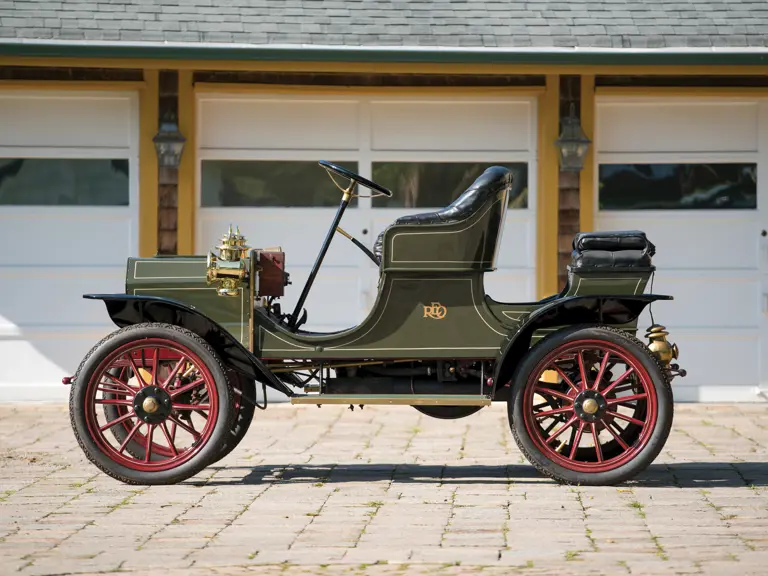
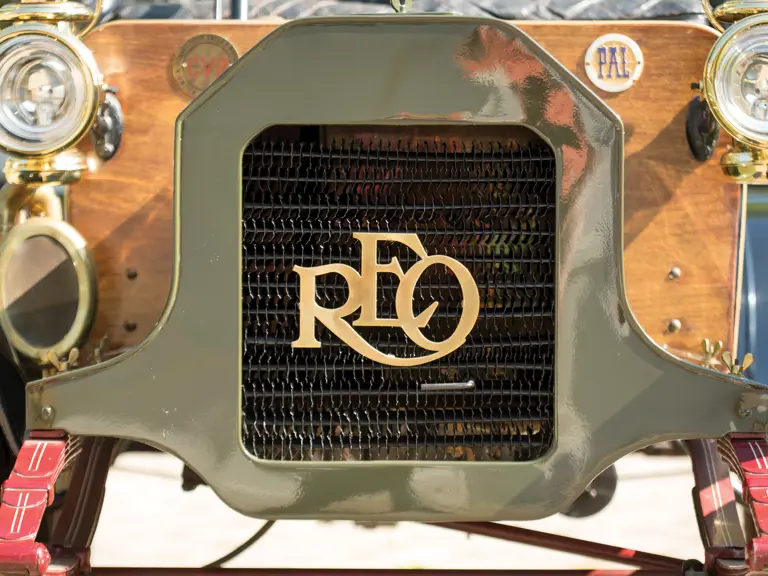
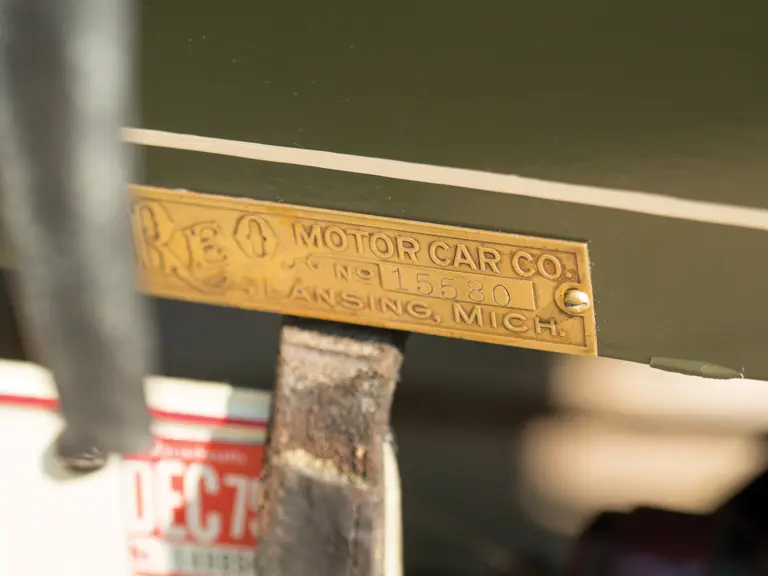

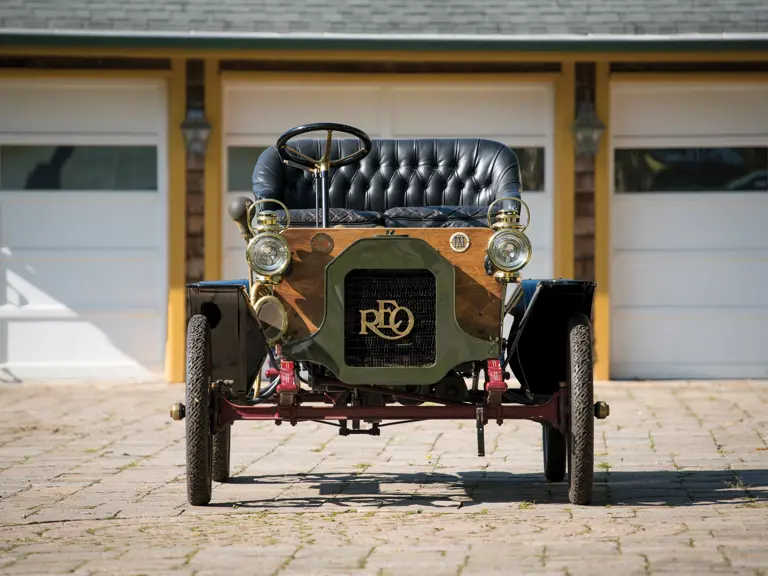
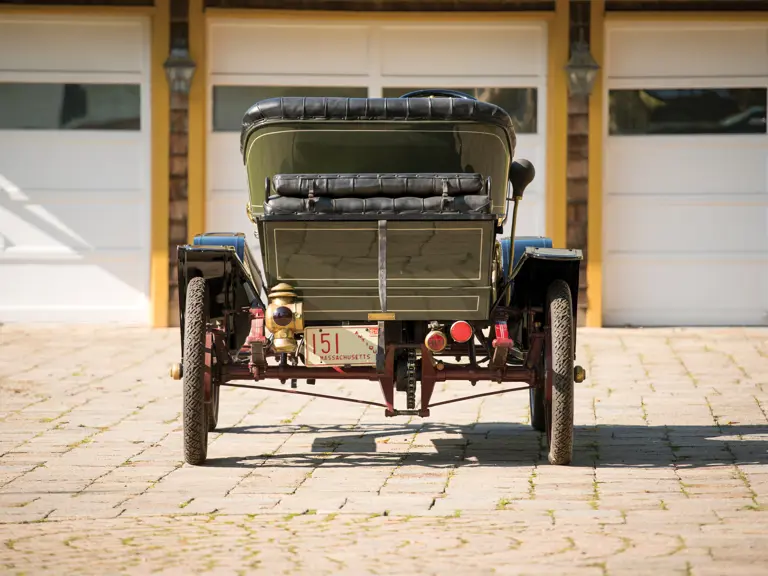
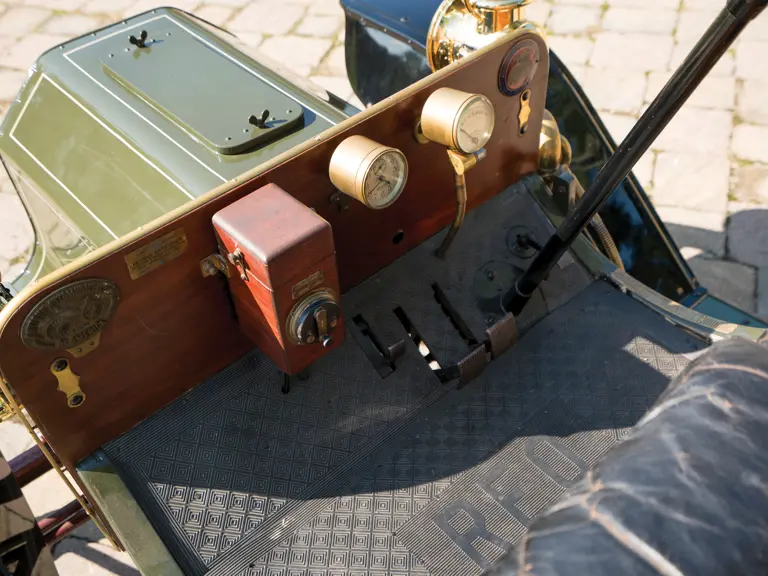
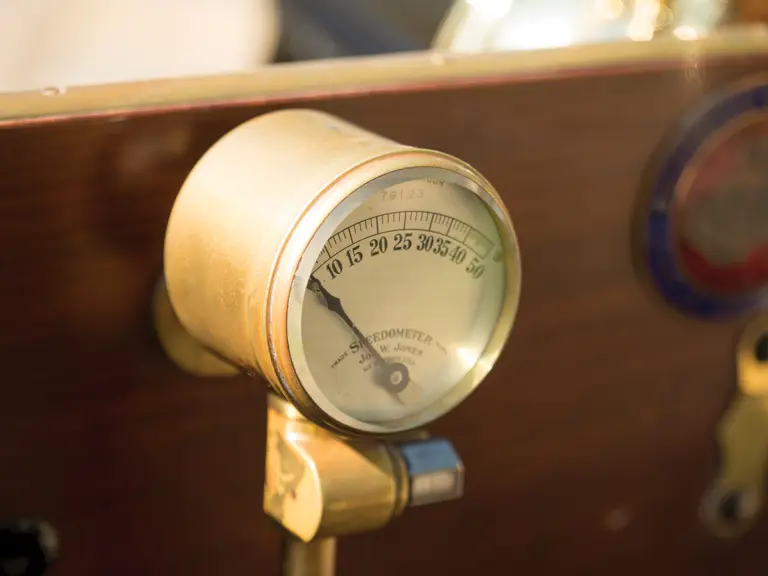

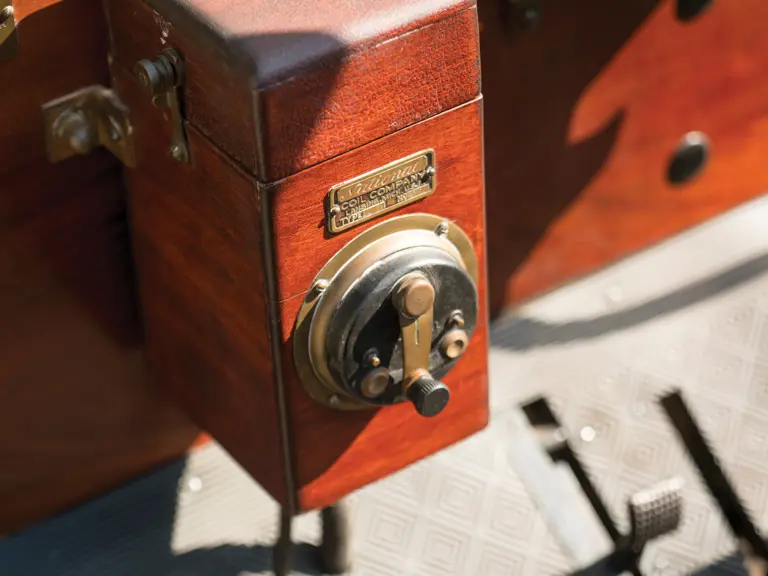

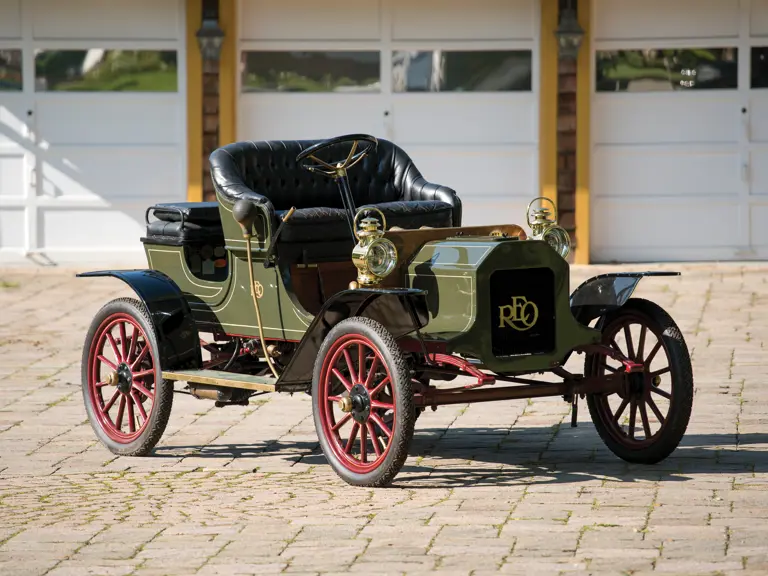


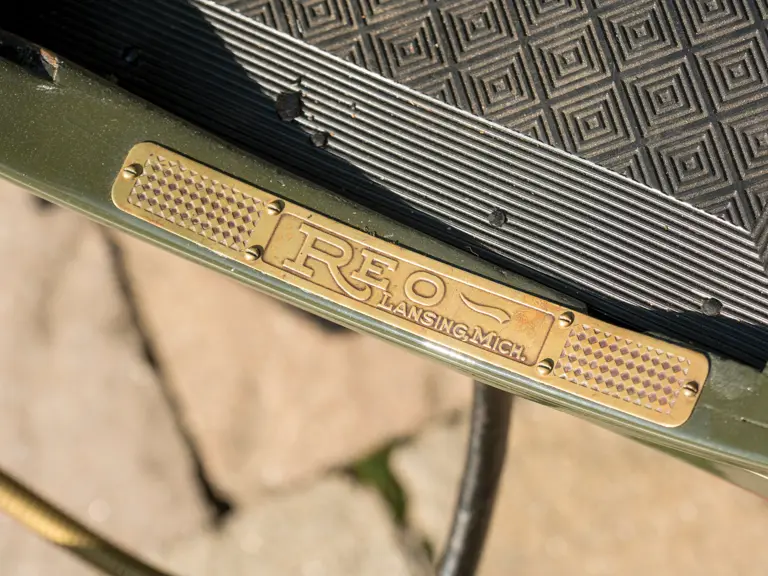
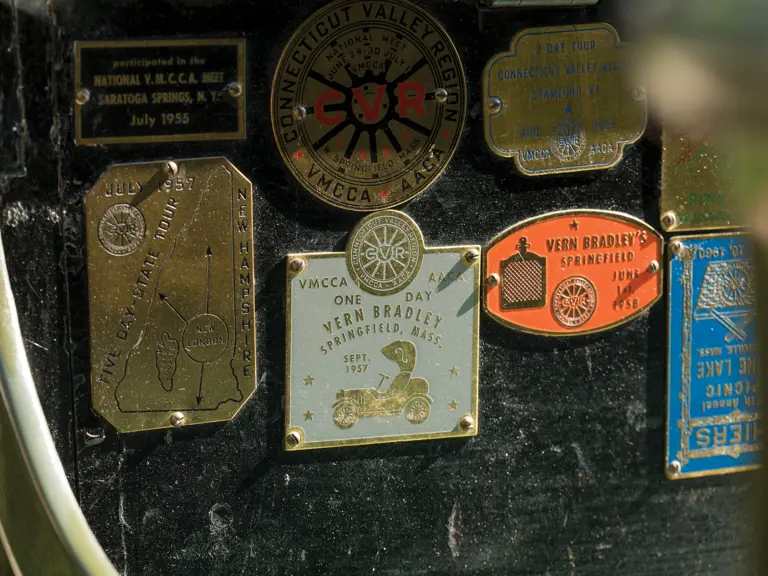
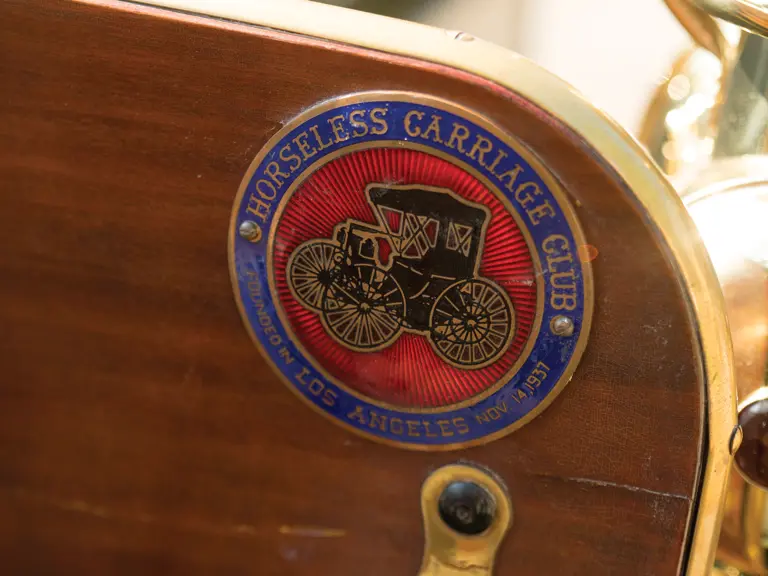
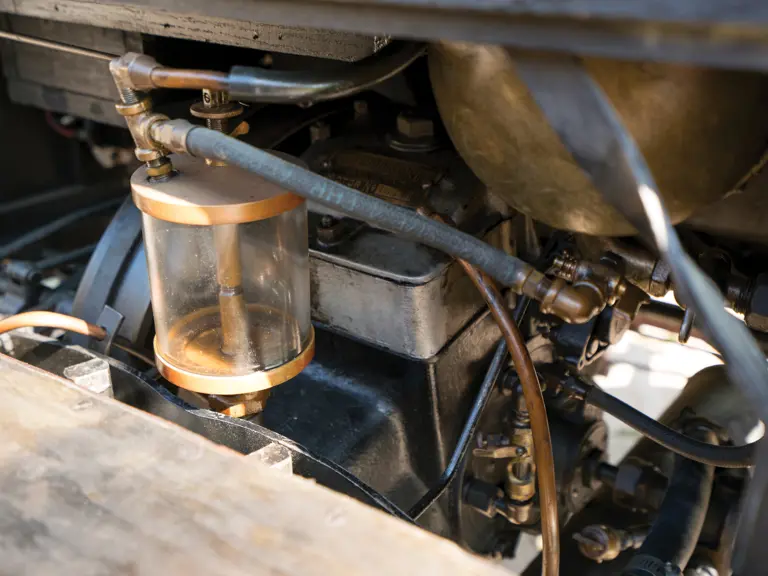
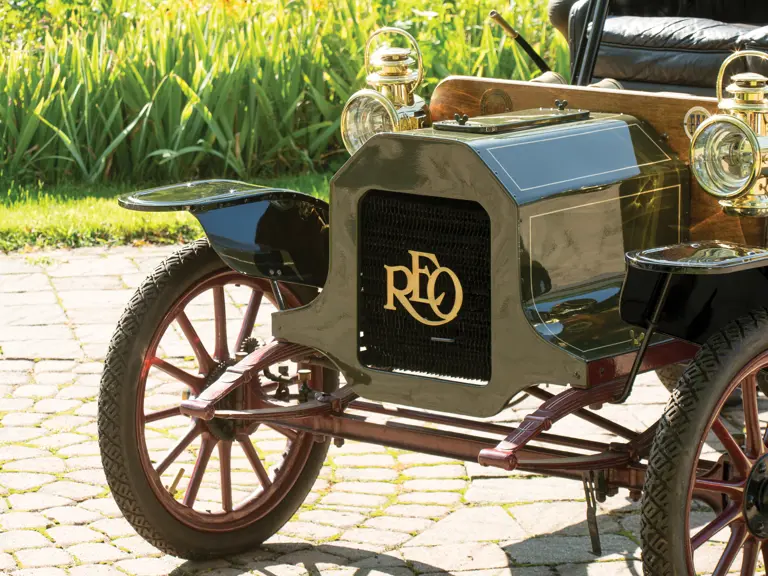

 | Hershey, Pennsylvania
| Hershey, Pennsylvania
